As we adjust to life during a global pandemic, it’s hard to imagine what life was like over a century ago during outbreaks. While in the past most faced quarantines without a telephone or a radio, today there is an expansive universe online. Even as the coronavirus forces physical isolation, the spectacular technological advances of the digital age make local and global connection possible. However, within education, the new centrality of communication technology in the context of the vast digital divide means the pandemic is exacerbating inequality, excluding many youth from their right to learn.
Prior to the outbreak of COVID-19, our East African youth skills organization, Educate!, reached youth primarily through national education systems—delivering our model directly in schools or working with the government. For over a decade, we’ve been operating this way, partnering with secondary schools in Uganda to prepare youth with the skills to succeed in today’s economy, as well as working on systems-level integration of skills-based learning in Uganda, Rwanda, and Kenya. But schools across East Africa have been closed since March, and access to tools like smartphones, internet, and electricity is scarce in the region. This means that many distance learning strategies being deployed in other parts of the world are not feasible, and we’ve observed a significant gap in solutions for youth. The challenges inherent to delivering distance learning in resource-constrained areas remain largely unsolved—requiring creative, context-driven solutions.
Our approach
When schools across East Africa closed in mid-March, Educate! acted quickly to launch a response—aiming to embrace the now and act swiftly—pivoting to deliver components of our skills-based model to youth remotely through radio, SMS (text messaging), and interactive voice response (“robocalls”). During this time, our team began executing extensive remote learning research, as well as developing data collection platforms, which would be key to ensuring our program best fit the needs of our learners.
Although moving to distance learning was new territory for us, luckily we didn’t have to reinvent the wheel. First, we invested in learning from the many organizations working to tackle the digital divide prior to COVID-19: Girl Effect in girls’ empowerment, Eneza and M-Shule in academic learning, and the countless organizations providing learning continuity in humanitarian emergencies. Leveraging these learnings and equity-focused best practices, our local teams of curriculum and learning experience designers hit the ground running.
In just over three months of implementation, we’ve experienced exciting progress and key breakthroughs, coupled with failures, flops, and stubborn challenges—all of which have been critical for developing distance learning strategies of our own. By sharing our emerging best practices, we hope to contribute to the creation of quality and equitable distance learning solutions, allowing young people in every corner of the world to stay engaged with their education.
Lessons learned for effective distance learning solutions
1. Leverage user data to tailor programmatic design to learner realities
Our greatest obstacle has been determining how to consistently reach youth with limited access to the internet and connectivity through phone or radio. To address this challenge and inform an effective response, we needed to deeply understand our students’ realities. And to understand our students’ realities, we needed data! While we leveraged existing country data on school closures, as well as young people’s broad access to technology, we needed to collect data specific to our students’ lives. We needed to understand what life was like at home, how frequently our students could access a phone or radio, what barriers they faced learning outside the classroom, and if gender affected their ability to participate.
While collecting data under countrywide coronavirus restrictions has been challenging, it has been critical for informing our response. To collect data, our team leveraged low-tech means, including disseminating surveys to youth through SMS, WhatsApp, and phone calls. We leveraged phone-based surveys to guide our programmatic decisionmaking and used WhatsApp groups for rapid design feedback. We have also targeted data on gender, developing a data point within our student contact database, allowing us to disaggregate by gender. As our team targets equal participation among boys and girls in our programming, disaggregation by gender has been critical for informing our remote gender equity strategy (discussed below in learning #5).
While these data collection platforms don’t reach all of our students, these systems have generated rich datasets on key indicators, such as participation. A key barrier we discovered through student surveys is that many youth have taken on new home responsibilities, cutting into time for their studies. Mornings are especially busy, as many students are completing household chores or supporting their families with agricultural work. In response to these learnings, we scheduled radio lessons on the weekends and sent learning prompts via SMS later in the day, when youth had finished their chores. By listening closely to our students and looking at a holistic picture of their lives, we have been able to increase participation in our remote programming quite simply, without addressing the complex issues of technology access.
2. Go beyond broadcasting content: Layer strategies and build in interaction
It’s widely recognized that real and meaningful learning occurs in the classroom only when curriculum goes beyond rote memorization and lecture-based instruction. We believe that the same approach should be applied to distance learning, so we have prioritized hybrid distance learning strategies that have two-way engagement built in.
We are taking a multipronged approach in Uganda—leveraging radio for content delivery, with robocalls, SMS, and remote mentorship for follow-up assessment, engagement, and guidance. While we don’t believe that distance learning strategies can replace in-person instruction, we think that “layering” strategies with built-in engagement can strengthen their impact. Evidence backs this up: In Kenya, a study examining the multimedia platform Shujazz showed that youth exhibited positive behavior changes after receiving targeted content through comics, social media, and SMS. Lastly, building in student responses to these mechanisms has the added advantage of supporting critical data collection.
3. Look for new ways to engage families
As schools began to close in March, our team urgently worked to collect student phone numbers to enroll students in our remote programming. However, of the 13,000 phone numbers we were able to collect, fewer than 50 percent were active. In addition, research conducted by our team at the outset of the pandemic found that many of our students only have access to a shared device for about 30 minutes per day.
Drawing on lessons learned from past emergencies, we conducted targeted outreach to parents and family members. We quickly learned that youth could participate more consistently in our remote programming if they used a family member’s phone rather than their own, as parents and relatives were more likely to own a phone as well as keep their phone numbers active. We also believe this strategy enhances the quality of the learning for youth because parents can help ensure their children engage actively with learning prompts. Further, a number of studies show that when communities and parents are engaged in students’ learning, academic achievement increases.
After targeting outreach to families, we saw a 29 percent increase in participation in our remote programming, and since launching, we have grown our reach from roughly 10 percent of our previous student level to 50-60 percent, with the expectation that our reach will continue to grow as we scale nationally. As with all things technology-enabled, this growth is exponential and has a snowball effect, so we’re hopeful about the future.
4. Incorporate story-based learning to keep youth engaged
Our team leveraged this feedback to rewrite radio scripts, rework linear learning activities, and introduce new characters within the lessons. While we are continuing to iterate on our distance learning curriculum, we are already beginning to see a positive impact, as 90 percent of our listeners have reported they relate to these story-based activities.
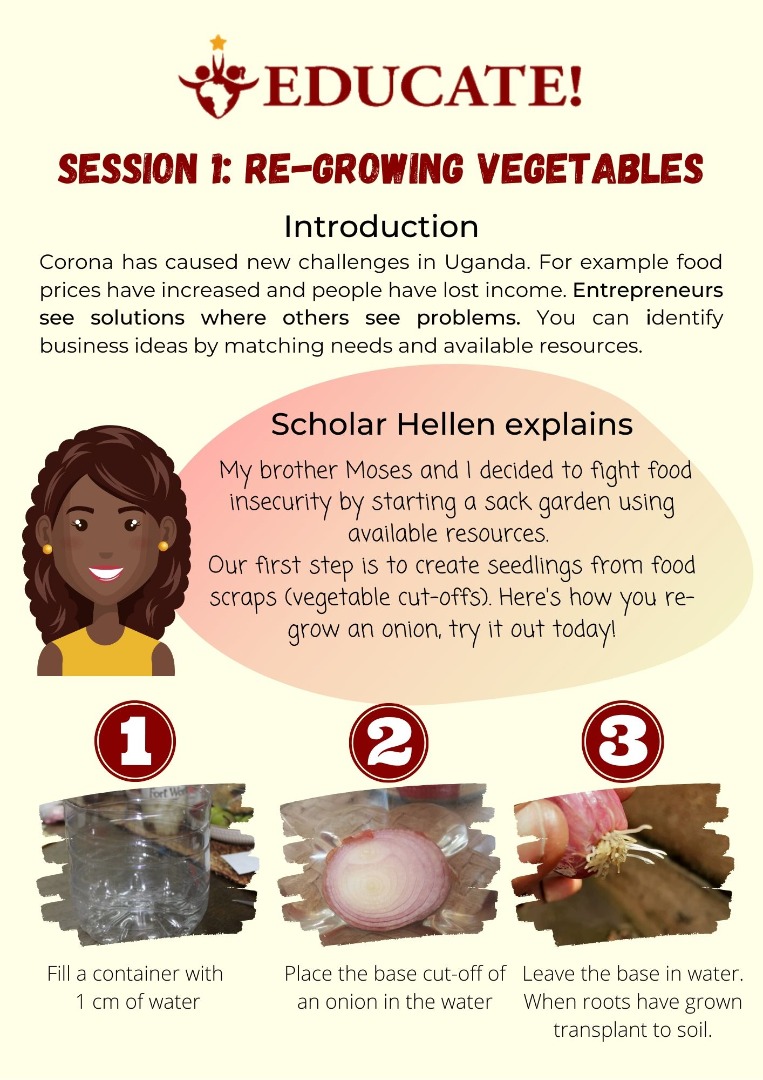
5. Think critically about pedagogy and content delivery to better support girls
Educate!’s curriculum was developed with gender responsiveness at the forefront, and we’ve designed our model to address critical gaps girls face—such as asset and skills gaps—to impact life outcomes. As we’ve worked to transition our curriculum to entirely new delivery mechanisms, we have taken a deliberate approach to integrating gender equity within our remote programming’s design and delivery.
Leveraging the data collection strategies outlined above, we discovered that boys in our programming were more likely to own their own phones than girls—making it challenging for our female learners to participate actively during radio lessons, as well as with assessments and learning prompts delivered via SMS. While we are still working to tackle the core issue of access among female learners, our team has set out to support girls and promote equal participation through a variety of programmatic components.
Our team of designers ensures that the content of every lesson and learning prompt delivered by radio or SMS is gender-responsive. For example, lead characters within our curriculum are female secondary school students, and we select confident female entrepreneurs within our case studies. Through our in-school model, we’ve seen that this strategy is effective in combating the socialization of girls to be quiet and reserved, as well as the negative stereotypes that typecast girls as less competent. In addition to gender-responsive pedagogy, we have begun exploring the implementation of all-girl listener groups as a way to create safe spaces at home for female learners. Following the release of a radio lesson, a female Educate! youth mentor convenes five to 10 girls on a conference call, where they connect to reflect on what they learned in the lesson, as well as discuss challenges they face learning at home.
In the foreseeable future, it seems likely that restrictions on gatherings will remain, limiting the education sector’s ability to reach youth directly in schools. By sharing these early lessons in effective distance learning, we believe we can work together as a sector to navigate this new normal. Together, we can rethink traditional education on a global level—pushing it further into the 21st century and toward a more equitable future.
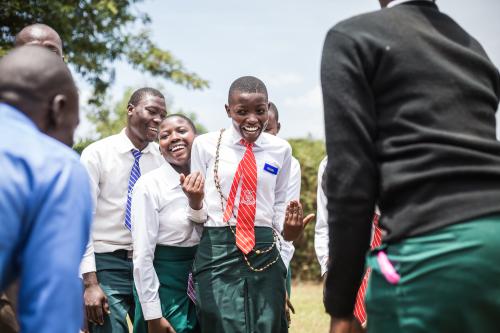
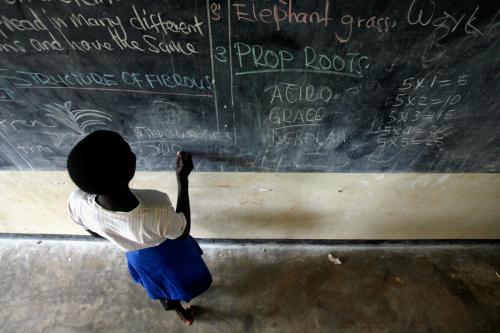
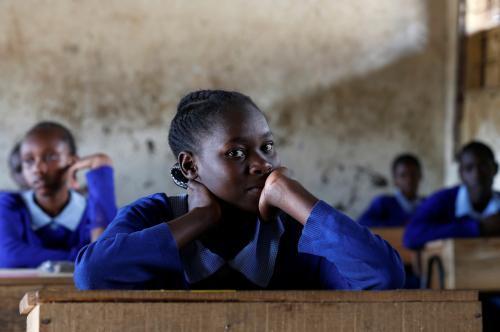



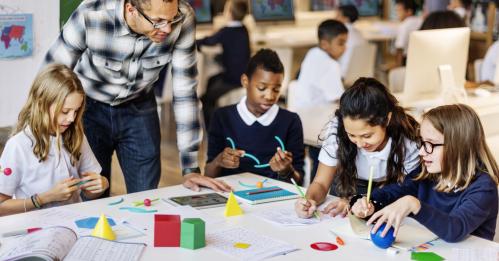
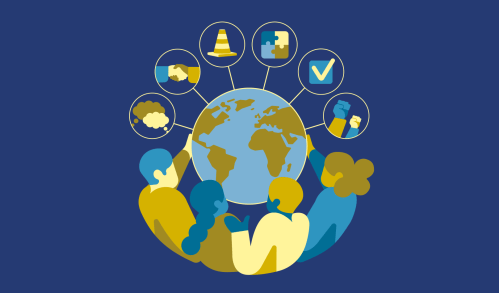
Commentary
Taking distance learning ‘offline’: Lessons learned from navigating the digital divide during COVID-19
August 7, 2020